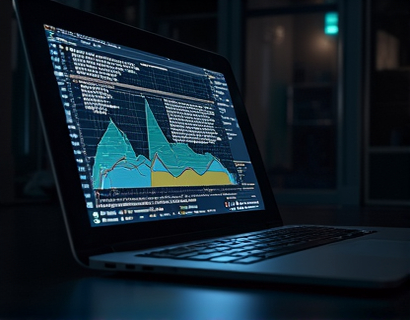Augmented Reality 2025: Expert Reviews and Emerging Trends Unveiled
The landscape of augmented reality (AR) continues to evolve at a rapid pace, driven by technological advancements, innovative applications, and increasing adoption across various industries. As we step into 2025, the AR sector is witnessing significant developments that are reshaping how we interact with digital information and physical environments. This article delves into the latest expert reviews and emerging trends in AR, providing a comprehensive analysis for professionals and enthusiasts aiming to stay ahead in this dynamic field.
Technological Advancements in AR
One of the most notable trends in AR for 2025 is the improvement in hardware and software technologies. Devices such as smart glasses, head-mounted displays, and mobile devices are becoming more powerful and efficient, enabling more seamless and immersive AR experiences. The integration of advanced sensors, higher resolution displays, and more efficient processors is making AR devices lighter, more comfortable, and capable of rendering complex 3D environments in real-time.
Another significant technological advancement is the enhancement of AR software frameworks and development tools. Platforms like ARKit, ARCore, and Unity are continuously updating their APIs and tools to simplify the development process and provide more robust features. These updates include better support for spatial mapping, improved object recognition, and more intuitive user interfaces, making it easier for developers to create high-quality AR applications.
Industry Adoption and Applications
The adoption of AR technology is expanding beyond the realm of gaming and entertainment, finding practical applications in various industries. In manufacturing and engineering, AR is being used for complex assembly processes, maintenance, and training. For instance, technicians can use AR glasses to overlay step-by-step instructions and visual guides, reducing errors and increasing efficiency. This not only enhances productivity but also reduces the need for extensive training and documentation.
In the healthcare sector, AR is revolutionizing medical training and patient care. Surgeons can use AR to visualize patient anatomy in real-time during operations, improving precision and reducing risks. Medical students can benefit from interactive AR simulations that provide hands-on experience without the need for physical models. Additionally, AR is being used in therapy and rehabilitation, helping patients recover more effectively through engaging and personalized exercises.
The retail industry is also embracing AR to enhance the shopping experience. Virtual try-on features allow customers to see how clothes, accessories, and makeup would look without physically trying them on. AR-powered virtual store tours and product demonstrations provide a more immersive and interactive shopping experience, driving customer engagement and increasing sales. E-commerce platforms are integrating AR to bridge the gap between online and in-store shopping, offering a seamless omnichannel experience.
Emerging Trends in AR
One of the emerging trends in AR is the rise of mixed reality (MR), which combines elements of AR and virtual reality (VR) to create more immersive and interactive experiences. MR allows digital objects to interact with the physical world in a more natural and intuitive way, opening up new possibilities for applications in education, entertainment, and professional training. For example, MR can be used to create interactive educational exhibits that respond to user interactions, providing a deeper understanding of complex concepts.
Another trend is the increasing focus on AR in the workplace, often referred to as Enterprise AR. Companies are leveraging AR to streamline operations, improve safety, and enhance collaboration. For instance, field service workers can use AR to access real-time data and instructions, reducing downtime and improving service quality. AR is also being used for remote collaboration, allowing teams to work together on complex projects regardless of their physical location.
The integration of AI and machine learning with AR is another exciting trend. AI-powered AR applications can provide more intelligent and context-aware experiences. For example, AR systems can use machine learning to recognize and track objects more accurately, enabling more natural interactions. AI can also enhance AR content creation by automating the generation of 3D models and environments, reducing the time and effort required for development.
Challenges and Considerations
Despite the numerous advancements and applications, the AR industry faces several challenges that need to be addressed. One of the primary concerns is the high cost of AR hardware, which can be a barrier to widespread adoption. While prices are gradually decreasing, there is still a need for more affordable and accessible devices to reach a broader audience.
Another challenge is the need for standardization in AR technologies and platforms. The lack of uniform standards can lead to compatibility issues and fragmented ecosystems, making it difficult for developers to create cross-platform applications. Industry players and organizations are working towards establishing common standards to facilitate interoperability and innovation.
Privacy and security are also critical considerations in AR. As AR applications often involve the capture and processing of real-world data, there is a risk of sensitive information being exposed or misused. Developers must prioritize data protection and implement robust security measures to build trust and ensure user safety.
Future Outlook
Looking ahead, the AR market is expected to continue growing, driven by technological advancements, increasing adoption, and the discovery of new applications. The convergence of AR with other emerging technologies such as 5G, IoT, and blockchain is set to create a more interconnected and intelligent world. 5G networks will provide the necessary bandwidth and low latency for seamless AR experiences, enabling real-time data exchange and cloud-based AR applications.
The Internet of Things (IoT) will integrate with AR to create smart environments where physical and digital elements work together harmoniously. For example, smart homes can use AR to display information about appliances, energy usage, and maintenance needs, enhancing the living experience. In the industrial sector, AR combined with IoT can optimize supply chains, predict equipment failures, and improve overall efficiency.
Blockchain technology is another area that holds promise for AR. By ensuring secure and transparent data transactions, blockchain can enhance the trustworthiness of AR applications, particularly in industries where data integrity is crucial. For instance, in supply chain management, AR can be used to track products from manufacture to delivery, with blockchain providing a tamper-proof record of each step.
Conclusion
The future of augmented reality in 2025 is bright, with significant advancements in technology, expanding applications across industries, and emerging trends shaping the landscape. As AR continues to evolve, it is essential for professionals and enthusiasts to stay informed and adapt to the changing dynamics. By embracing these developments and addressing the associated challenges, the AR sector can unlock its full potential and drive innovation in the years to come.











































